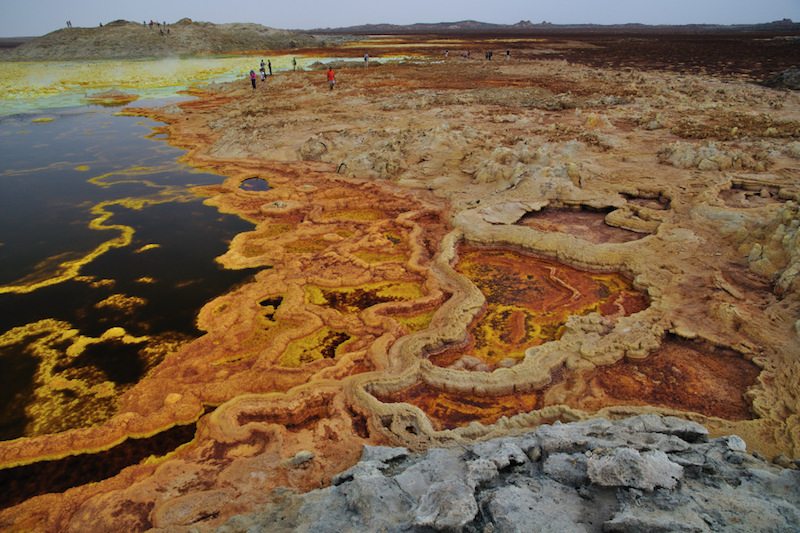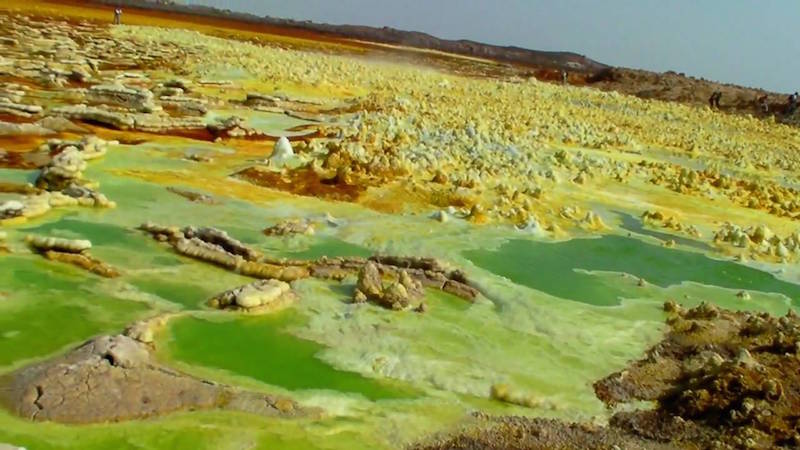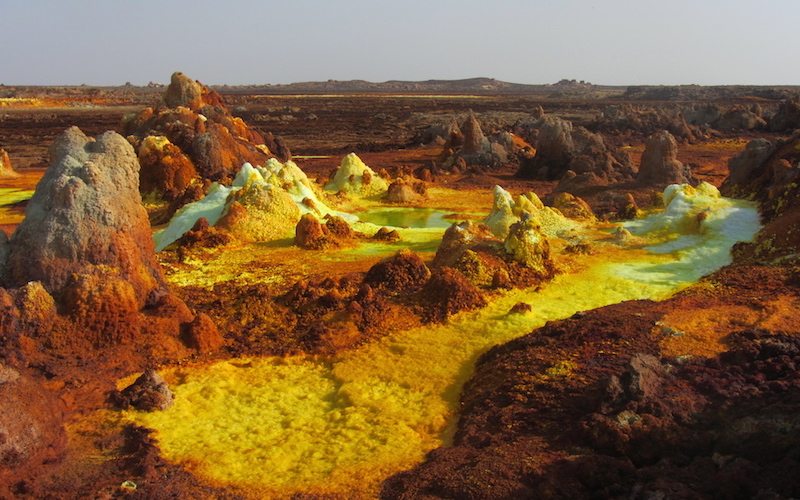Danakil Desert, Ethiopia
Episode #6 of the course “Natural Wonders of the World”
Commonly reaching temperatures of over 120 degrees Fahrenheit, the Danakil Desert in Ethiopia is one of the most uninhabited places on the planet. For centuries, the precious mineral salts that dry in the desert valleys lower than 300 feet below sea level have been collected by locals, who travel on foot across the sands to retrieve them and transport them back on camels.
The slabs of salt that can be cut from the desert are often several pounds and as much as a foot across. It is often hours of trekking across the desert to reach the salt fields, and the first road was finally proposed in 2013.

The mineral salts in the Danakil Desert are caused by the underground volcanos in the region, including the Dallol Volcano. The desert includes a number of saturated mineral salt lakes, including the Yellow Lake and the Black Mountain with the Blue Lake. The salts and the landscape is one of the most beautiful hidden natural wonders. The lakes themselves can range from yellow to blue to green, depending on the minerals they contain and the thickness of the layers in the salt crystal structures.

The strange salt structures found throughout the Danakil Desert are created by a process of rapid crystallization and dehydration of the salty waters. The area has suffered civil unrest over the past decades and the salt trade often suffers from a flux in demand and the ability to safely and efficiently transport the salt blocks.
Share with friends

